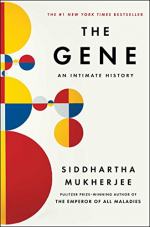|
This section contains 799 words (approx. 2 pages at 400 words per page) |

|
Summary
Once DNA became identified as the unit of heredity, a scientist named Maurice Wilkins began work to illuminate the structure and subunits of DNA. Mukherjee then digresses to discuss how proteins make biochemical processes possible. He uses the example of hemoglobin to demonstrate the links between biology and chemistry and the emergence of biochemistry and its own field. Next, he returns to Wilkins and discusses the scientist's attempt to discover the three-dimensional structure of DNA. He used techniques called crystallography and x-ray diffraction to attempt to map the physical structure of DNA. He was joined by another scientist, Rosalind Franklin, who was working toward the same goal but the two did not get along and ended up working separately.
A lecture given by Wilkins in 1951 caught the attention of James Watson who also became consumed with the...
(read more from the "Important Biological Objects Come in Pairs" (Part Two) Summary)
|
This section contains 799 words (approx. 2 pages at 400 words per page) |

|




